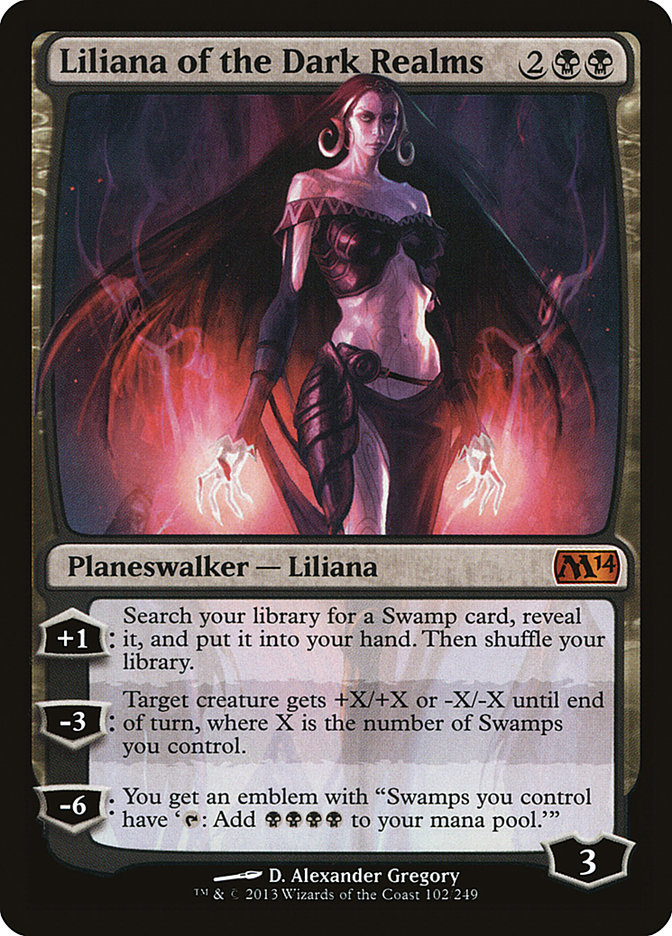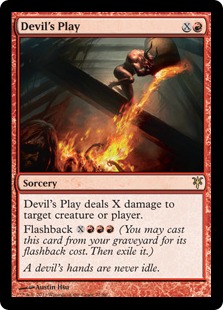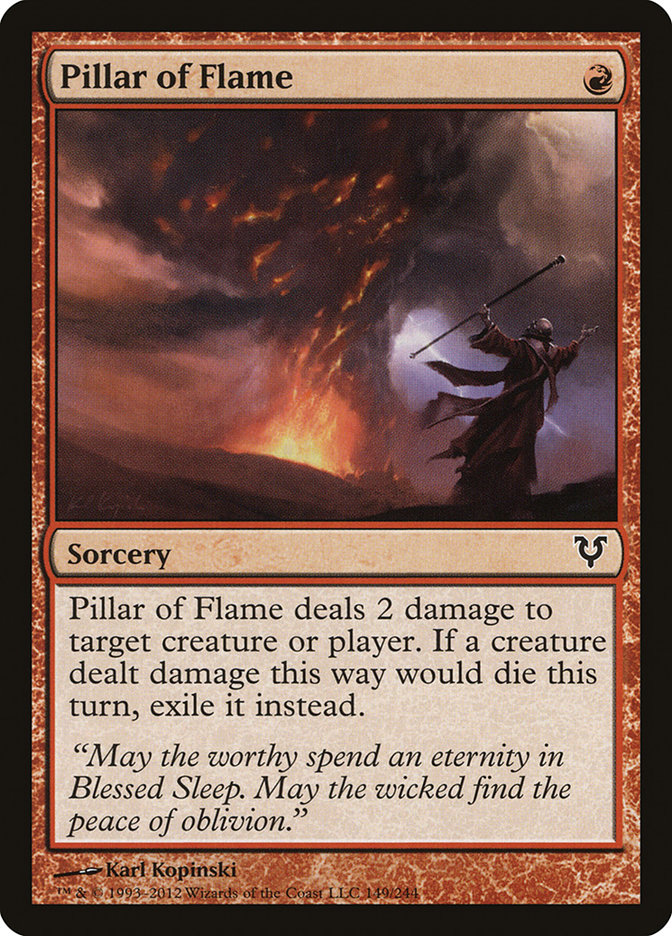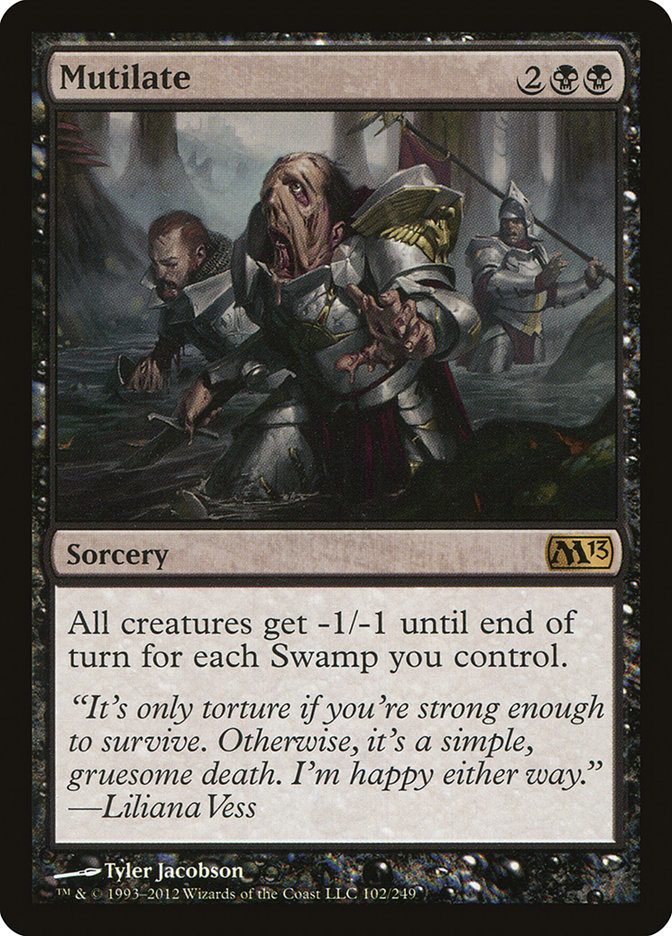My name is Frank Skarren, and today I get to do something awesome. I get to write my first official weekly article for StarCityGames.com! Also, and more importantly, I get to share my ideas and help make you a better Magic player, or at least have a little more understanding of the game. I’m going to gear my articles towards a middle ground between casual/competitive with a little anecdotal spice thrown in. If you’re looking for Draft strategy, Standard decklists, and fundamental gameplay advice, this is going to be the place to be. Magic is a focal point in my life, and I spend most weekends playing, whether it’s Friday Night Magic, PTQs, Grand Prix, or the Pro Tour itself. Next to the competitive nature of the game, my favorite part of Magic can be summed up in one word:
Synergy.
Speaking of, I’d like to open things up by taking a look at the current Standard powerhouse that is Jund. Now don’t worry, I’m not about to write the millionth strategy article about the hated deck that is Jund. But why is that? Why do people hate Jund?
It’s simple really. The deck has no SYNERGY.
Jund is a pile of powerful cards jammed into a deck that don’t really work off of each other at all. People don’t like losing to individually powerful cards that don’t let you play interactive Magic. Have you ever had a miracled Bonfire of the Damned annihilate your board? Have you ever had all your creatures murdered or stolen by an Olivia Voldaren? Have you ever been hit by a train of Thragtusks, each putting your opponent further and further out of reach? Suffice it to say it sucks.
That being said, I think there’s a way we can bring some life to the archetype. Let me introduce you to an old friend of mine:
What seems like forever ago, I was trying to build a Standard deck for Grand Prix Atlantic City. At the time the format was defined by midrange decks, a few decks trying to go over the top with powerful cards like Unburial Rites, and red-based aggressive decks. I decided to try to build a deck that could tangle with the midrange decks but also had the potential to go over the top and crush them. I was able to develop this spin on classic Jund and pilot it to a Top 64 finish:
Creatures (12)
Planeswalkers (8)
Lands (25)
Spells (15)

Unfortunately, I can’t remember exactly what I had in the sideboard at the time, but as you can see, the basic Jund shell is there. Farseek is still the best card in the deck, and some of the cards are just overwhelmingly powerful (I’m looking at you Olivia Voldaren). However, you have a sweet synergy engine based on Liliana of the Dark Realms that lets the deck play out as more of a planeswalker control deck than normal Jund. Before I get into any card choices/interactions, let me update the deck now that three more sets are available to us:
Creatures (13)
Planeswalkers (6)
Lands (25)
Spells (16)

Now that we’ve brought things up to date, let’s start breaking it down.
Mana Base
The mana base is a reasonable place to start. The addition of Stomping Ground obviously helps a lot. You no longer need to play the hideous Terramorphic Expanse package in order to have access to your colors. Keeping the Swamp count high is important in order to fuel Liliana and Mutilate. I’ve found thirteen to be the perfect number to let us Mutilate for four on turn 4-5. Being able to reliably get Loxodon Smiter off the board early can be instrumental.
The Rootbound Crag might look awkward next to five basic Swamps, but it normally comes in untapped thanks to the shocklands. Remember, if Crag is coming into play tapped, it means you are fixing both of your missing colors at the same time. The Cavern is mainly there to force Griselbrand in against counterspell decks or at least let you get a few Thragtusks into play. Finally, remember Liliana can find Overgrown Tomb and Blood Crypt, not just basic Swamps. The two important thresholds to hit are triple green for Garruk in the midgame and triple red for the flashback on Devil’s Play in the late game.
Core
Let’s move on to the core of the deck, Liliana of the Dark Realms. I can’t explain how far ahead you’ll feel if you Farseek into Liliana on the play against non-hyperaggressive decks. She instantly fixes your mana and makes sure you hit all of your land drops. Usually, reaching her ultimate is a win on the spot. The trick to making her ultimate a win is finding ways to take advantage of large amounts of mana that also function well when you don’t have an emblem.
Luckily, the Jund shell already gives us two great options in Rakdos’s Return and Kessig Wolf Run. Return is great at disrupting your opponent in the midgame and does a fine Fireball impression once you have an emblem. Kessig Wolf Run is a strong utility land in a fair game and turns all of your creatures into Phage the Untouchable once you get an emblem.
The other option we have access to with this list is Devil’s Play. It fits the deck perfectly, acting as a removal spell for the early game and a win condition in the late game once we get Liliana going. It’s also a last line of defense against any deck trying to mill you out via Nephalia Drownyard or Jace, Memory Adept.
Although he might not look like it, Griselbrand is the final piece of the Liliana puzzle. Some games you’ll fetch a few Swamps with her and eventually have to use her as a kill spell or your opponent will destroy her. You’ll be left in a position where you have a lot of mana but not enough to actually X spell your opponent out. Enter Griselbrand. Even if he dies on the spot, you can usually afford to activate him once, which will make sure you don’t run out of action and can close the game out. If he doesn’t die on the spot, well, let’s just say your opponent is in for a rough time.
Removal
Now let’s take a quick look at the removal suite. I like using Doom Blade as our spot removal spell of choice. It is important to have an instant speed removal spell to protect our planeswalkers from the likes of Hellrider and Thundermaw Hellkite as well as an end of turn Restoration Angel. Putrefy also serves this purpose but is a touch more expensive. It does come with the upside of being able to take out powerful black creatures (still looking at you Olivia Voldaren) and the stray artifact.
Pillar of Flame is a very important card to have access to right now. A lot of people are playing creatures that get value from hitting the graveyard like Voice of Resurgence and Xathrid Necromancer. Even though we can’t always reliably cast Pillar on turn 1 with such a Swamp heavy mana base, being able to safely remove these problem creatures to set up our board sweepers is essential.
Speaking of sweepers, you might notice this list isn’t playing Jund go-to Bonfire of the Damned. Having so many Swamps allows us to use Mutilate as our sweeper of choice. Although it doesn’t lead to the blowout of a timely miracled Bonfire of the Damned, Mutilate is much more reliable at consistently clearing out mid-sized creatures, containing early rushes, and making sure hexproof creatures stay in the graveyard where they belong. The one big downside of not having Bonfire is how great it can be at taking out opposing planeswalkers.
This brings us to our last piece of hard removal in Dreadbore. Having access to a catchall removal spell for creatures is very nice and the added versatility of sniping a planeswalker makes it an easy add. Finally, do not be afraid to use Liliana herself as a four-mana removal spell. It’s not pretty, but sometimes it needs to be done.
Tips and Tricks
The remaining cards in the deck are just the usual power cards that make Jund good in the first place. Instead of going over why Thragtusk is good, I’d rather explain a few sweet plays that might come up.
First off, people WILL underestimate Liliana of the Dark Realms. I’ve had people neglect to attack her when she is on six loyalty, thinking nothing too bad was going to happen only to Devil’s Play them for 40 the next turn. I’ve had people pick her up and read her in shock when I say I’m going to use her -3 to pump my own creature. Be ready for your opponent to smirk when she hits the table, and be ready to wipe that smirk off their face.
Most of the decks awesome interactions come from Liliana. Holding Kessig Wolf Run in your hand until the last moment is almost always a good idea in order hide information from your opponent. It is especially true for this deck. Using Liliana’s -3 to pump your creature in unison with Kessig Wolf Run can lead to a victory out of nowhere. You will also be surprised at how often you can use Kessig Wolf Run, Liliana’s -3, and Garruk’s -3 all in the same turn to draw somewhere around infinity cards.
Vampire Nighthawk is a good roadblock in this deck to make sure we don’t get run over before we can get our sweet planeswalkers going. It can also send those pesky aggressive decks packing after just one hit supercharged by Liliana of the Dark Realms or Kessig Wolf Run.
Make sure you always watch your Swamp count. Mutilate is a great sweeper, but remember that you don’t always have to get as many Swamps into play as possible before pulling the trigger. If you can flip a Huntmaster of the Fells versus an aggressive deck, a Mutilate for three will usually be enough to send most of their creatures packing while still leaving your Huntmaster alive.
Finally, when it comes to sideboarding, there is one important rule I always keep in mind: never sideboard below two Lilianas. Even though she can be a little slow, she is the engine of the deck, and you always want to have some amount of access to her. Other than that, the sideboard is pretty self-explanatory. If you have any questions about specific strategies, do not hesitate to ask.
This deck is a bit more on the side of casual than competitive. That being said, it does have the potential to win an event and is great at beating up on midrange strategies, especially typical Jund itself. If you’re looking for a fun deck to play at a PTQ that is capable of winning, sleeving up some Lilianas might be the choice for you.
If all goes well, I should be writing an article for you guys every Monday. I’d love to hear what you guys are interested in reading about in the comments!




